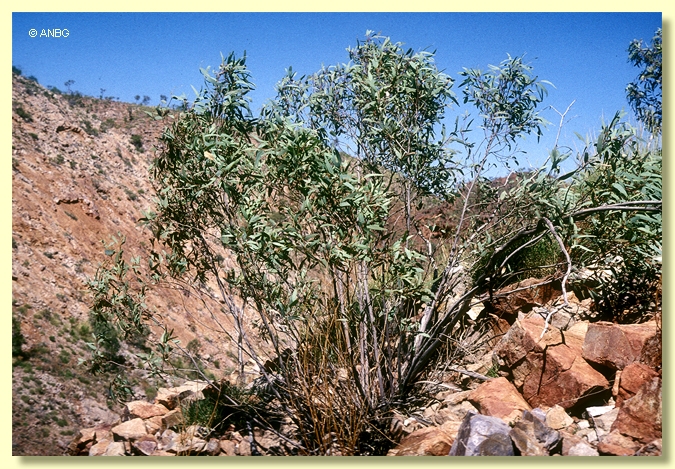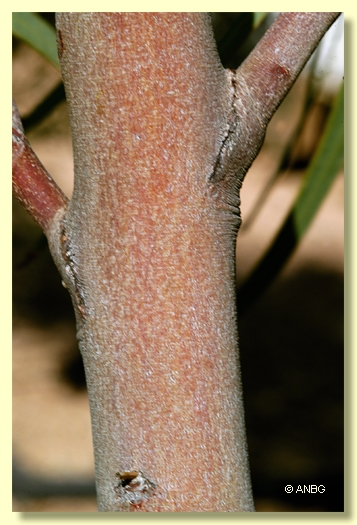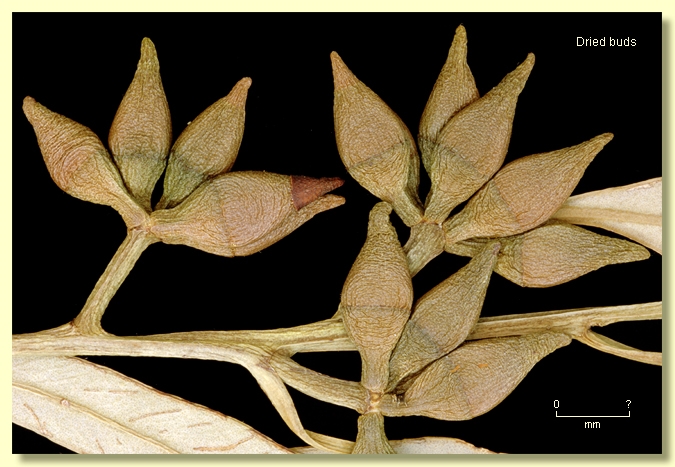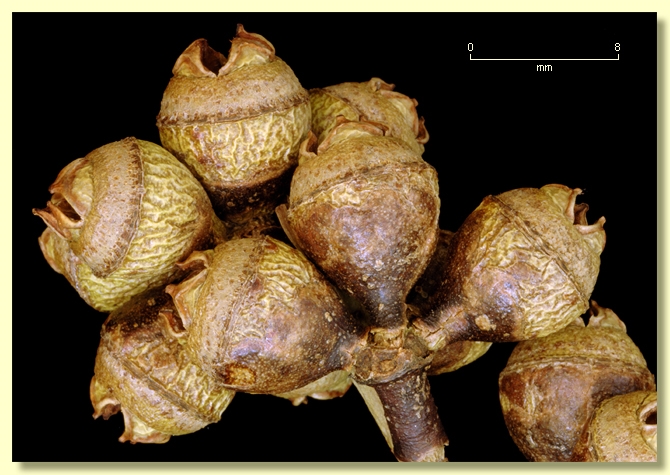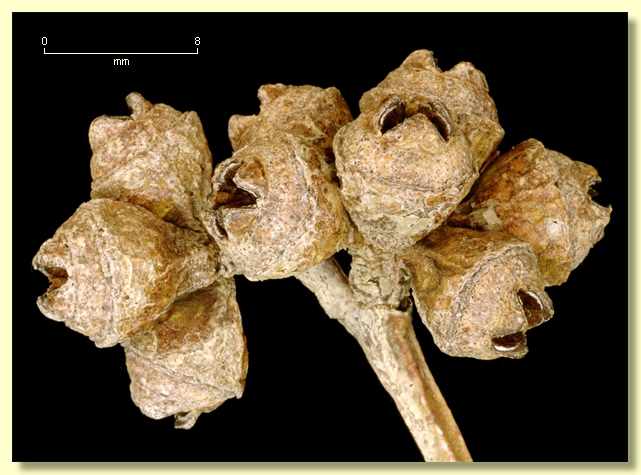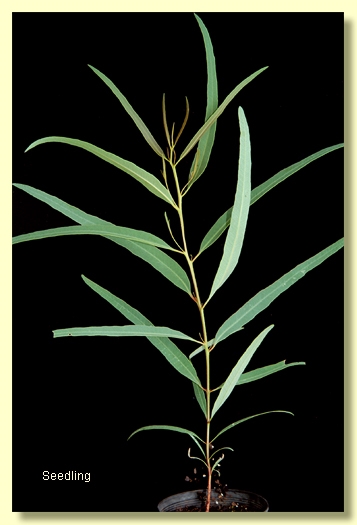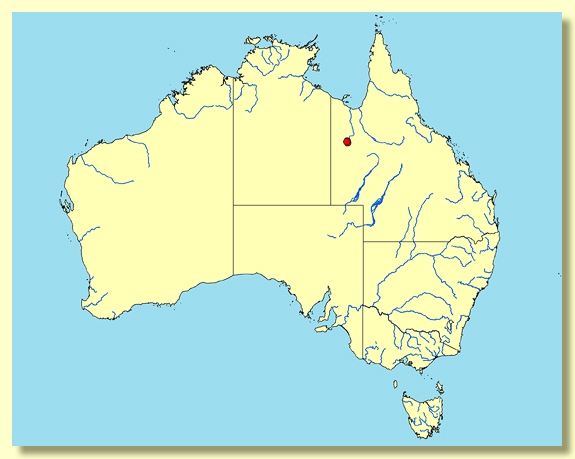Eucalyptus | Symphyomyrtus | Exsertaria | Erythroxylon
Euclid - Online edition
Eucalyptus nudicaulis
Eucalyptus nudicaulis A.R.Bean, Austrobaileya 3 (3) 467 (1991).
T: Queensland: Burke District: 25 km N of Mount Isa, November 1986, P.L.Harris 98; holo: BRI.
Mallee to 6 m tall. Forming a lignotuber.
Bark smooth throughout, mottled grey to pinkish or silvery.
Branchlets lacking oil glands in the pith.
Juvenile growth (coppice or field seedlings to 50 cm): stems squared in cross-section; leaves always petiolate, alternate, narrowly lanceolate, ca 7–10 cm long, 1–2 cm wide, green.
Adult leaves alternate, petiole 0.8–2.5 cm long; blade narrowly lanceolate to almost linear, 7-18(19) cm long, 1–2(2.5) cm wide, base tapering to petiole, concolorous, dull, grey-green, side-veins acute or at an angle greater than 45° to midrib, moderately to densely reticulate, intramarginal vein close to the margin, oil glands island, numerous.
Inflorescence axillary unbranched, peduncles 0.5–1(1.3) cm long, buds 7, pedicellate, pedicels 0.1–0.4 cm long. Mature buds ovoid, scar present (outer operculum shed early), operculum conical to horn-shaped, rarely slightly beaked, 0.7–1.1 cm long, stamens erect, anthers oblong, versatile, dorsifixed, dehiscing by lateral slits, style long, stigma tapered, locules (3) 4 or 5, the placentae each with 6 vertical ovule rows. Flowers white.
Fruit sessile or pedicellate, pedicels 0–0.4 cm long, cup-shaped to hemispherical, 0.6–0.9 cm long, 0.6–0.9(1) cm wide, disc raised, raised disc convex to oblique, valves 4 or 5, exserted.
Seeds dark brownish-black, 1–1.5(2) mm long, ± cuboid to pyramidal, dorsal surface variably pitted, hilum terminal.
Cultivated seedling (scored at ca node 10): cotyledons more or less oblong-reniform; stems squared in cross-section; leaves always petiolate, opposite for the first 3–5 nodes then alternate, lanceolate, 6–13 cm long, 0.8–2 cm wide, dull, grey-green.
Flowering has been recorded in February and March.
A mallee confined to some rocky gullies and steep hillsides in the Mt Isa – Cloncurry district of north-west Queensland. Characterised by its smooth bark, its narrow lanceolate juvenile and adult leaves and the long acute operculum.
Eucalyptus nudicaulis belongs to Eucalyptus subgenus Symphyomyrtus section Exsertaria (red gums) series Erythroxylon because the buds have two opercula, ovules are in six rows, seeds are pyramidal to cuboid and black, cotyledons are reniform to oblong, adult leaves are concolorous and the fruit have exserted valves. Within the series Erythroxylon, E. nudicaulis is closest to E. gillenii and is only weakly separated by having a slightly longer more acute operculum and by having narrower juvenile leaves.
Seedlings of E. gillenii grown at CSIRO Black Mountain, Canberra, from seed collected in central Australia, have proven to be variable in leaf shape, being commonly broadly lanceolate but sometimes narrowly lanceolate. The narrow seedling leaves of E. nudicaulis are very similar to those cultivated from collections of E. gillenii made in the Hermannsburg region of Central Australia.
Eucalyptus nudicaulis : Latin nudus, naked or bare and caulis, stem, referring to the smooth bark on the stems.

